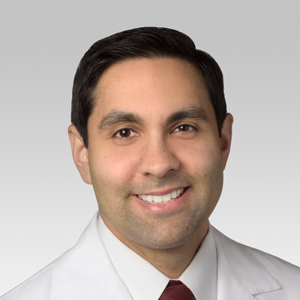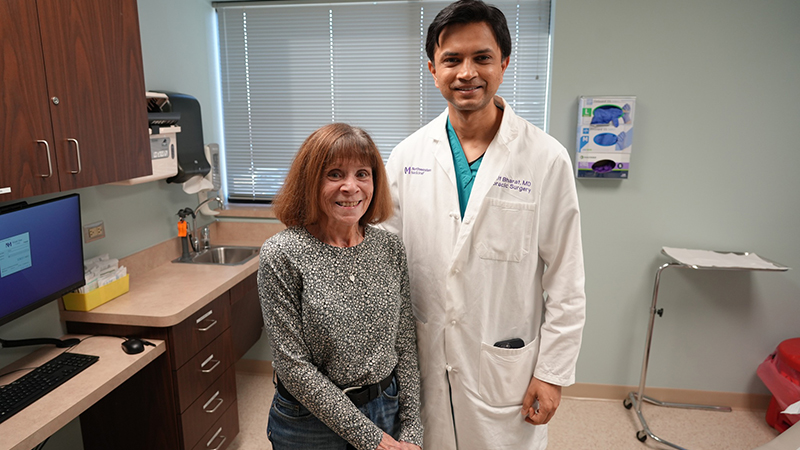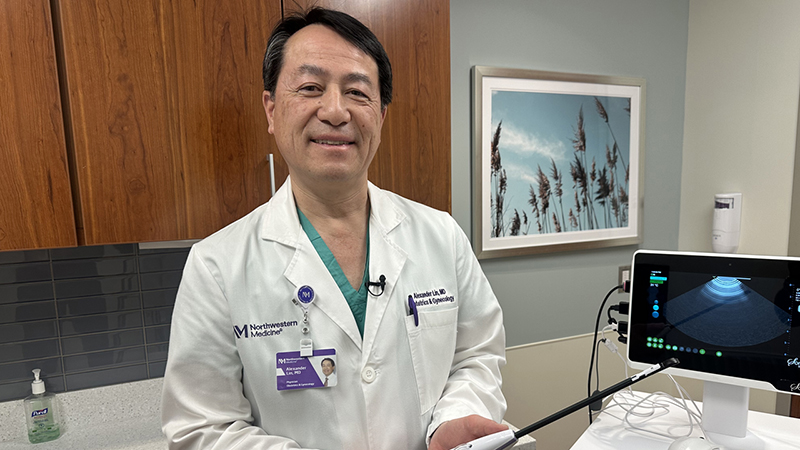What You Need to Know About Protecting Your Joints
Published June 2023
Alternatives to Joint Replacement
Joint replacement is one of the most commonly performed surgeries in the United States, and the number of procedures performed each year continues to grow at a staggering rate. While total joint replacement may be the right choice for many people, joint preservation is helping many others, especially younger patients, avoid or delay the procedure.
When to Seek Help
Although your body has 360 joints, the hip and the knee bear the most load when you walk, run and do other forms of physical activity. That’s why the hip and knee are most often associated with painful arthritis and are the most commonly replaced joints.
Sanjeev Bhatia, MD, orthopaedic sports medicine surgeon and co-director of Northwestern Medicine Hip and Knee Joint Preservation Center, suggests seeking help if you experience recurring pain in either joint. “Joints are built for the long haul, but there are certain features of the anatomy that can make you more prone to developing cartilage injury, a precursor to arthritis,” he says. While you may not know you have these underlying features, Dr. Bhatia says you will likely to be able to sense something based on symptoms.
The best medicine is prevention.— Sanjeev Bhatia, MD
“Typically for the hip, you’ll experience pain in the front part of the hip that radiates through the groin. This will be particularly noticeable with twisting activities of the leg,” he says. As for the knee, having excessively bow-legged or misaligned joints may make you more prone to damage. You may overload to one side of the knee, which can lead to early cartilage wear.
Nonsurgical Techniques for Joint Preservation
Joint preservation is an emerging field that involves innovative ways to restore motion while reducing pain and ongoing damage in the joint.
“There’s no substitute for the original joint you’re born with,” says Dr. Bhatia. “As a field, we’ve gotten really good at joint replacement, and it’s great for the right patient. But for a younger patient, in particular, the best medicine is prevention.”
The first level of treatment for most joint pain involves rest, activity modification, anti-inflammatory medications and physical therapy. If symptoms don’t improve, injections in the joint may help decrease inflammation and provide lubrication to the impacted areas.
“People don’t realize a joint is a living entity. An injury causes inflammation, which can chemically degrade the existing cartilage. When we take away inflammatory factors, that’s what helps protect the cartilage.”
Minimally Invasive Surgery for Joint Preservation
If nonoperative techniques don’t bring relief, minimally invasive surgery may be an option. Procedures include advanced hip arthroscopy for hip impingement and labral tears, cartilage restoration, meniscus repair and transplantation, and osteotomy techniques for both the hip and knee.
For hips, advanced arthroscopic treatments can remove bone spurs that cause painful hip labral tears and accelerated hip cartilage damage through a process called femoroacetabular impingement (FAI), one of the leading causes of hip arthritis in the United States. “This procedure has been revolutionary,” says Dr. Bhatia. “There are many conditions we can treat through this minimally invasive surgery, and relatively quickly.”
For knees, arthroscopic debridement can smooth out loose fragments or flaps for patients suffering from mechanical pain in the knee. If accelerated knee cartilage damage is caused by malalignment, an osteotomy procedure can also be performed to realign the joint. In this procedure, the bone is realigned to prevent accelerated damage.
For those with cartilage damage, new treatments are also emerging. “There are newer agents that we can use to inject into the hip and knee that may be safer for alleviating pain, with little to no risk for complications,” says Dr. Bhatia.
This includes a technique that uses matrix-induced autologous chondrocyte implantation (MACI) to restore knee cartilage. According to Dr. Bhatia, the first step in MACI involves taking a sample of the patient’s cartilage from a non-weight-bearing part of the knee. The tissue is sent to a lab, where cells are embedded in a special collagen membrane that promotes tissue growth. During surgery, the new tissue, called the MACI membrane, is trimmed to the desired size and shape, and secured to the bone.
Stay Active, Longer
As the number of joint replacement surgeries continues to grow, Northwestern Medicine Hip and Knee Joint Preservation Center is serving a growing number of patients seeking alternative options. “Joint replacement produces outstanding results for people,” says Dr. Bhatia. “But if we can help individuals avoid joint replacement, or delay it, it helps keep them more active in their life. That’s what we’re trying to achieve.”






